Which high histamine spices should you avoid with histamine intolerance? Spices add delightful flavor to food, and some have health benefits, including antioxidant and anti-inflammatory activity
In fact, some spices contain more antioxidants gram per gram than fruits and vegetables. However, some spices can be problematic if you have histamine intolerance.
Histamine, a molecule that triggers allergic reactions, is an important component of many spices. Therefore, they can increase your body’s histamine burden.
If you eat these spices in significant quantities, they can produce the familiar symptoms of histamine intolerance of histamine sensitivity, the ones you’re trying so hard to avoid. Some spices are known to trigger histamine intolerance symptoms,
Because spices provide so much flavor to food and have anti-inflammatory benefits, don’t remove all spices from your diet.
However, you should be aware of whether the spices you’re eating are worsening your histamine sensitivity symptoms and stay away from those.
Here are some of the most common spices you could have a problem with if your body struggles to eliminate histamine.
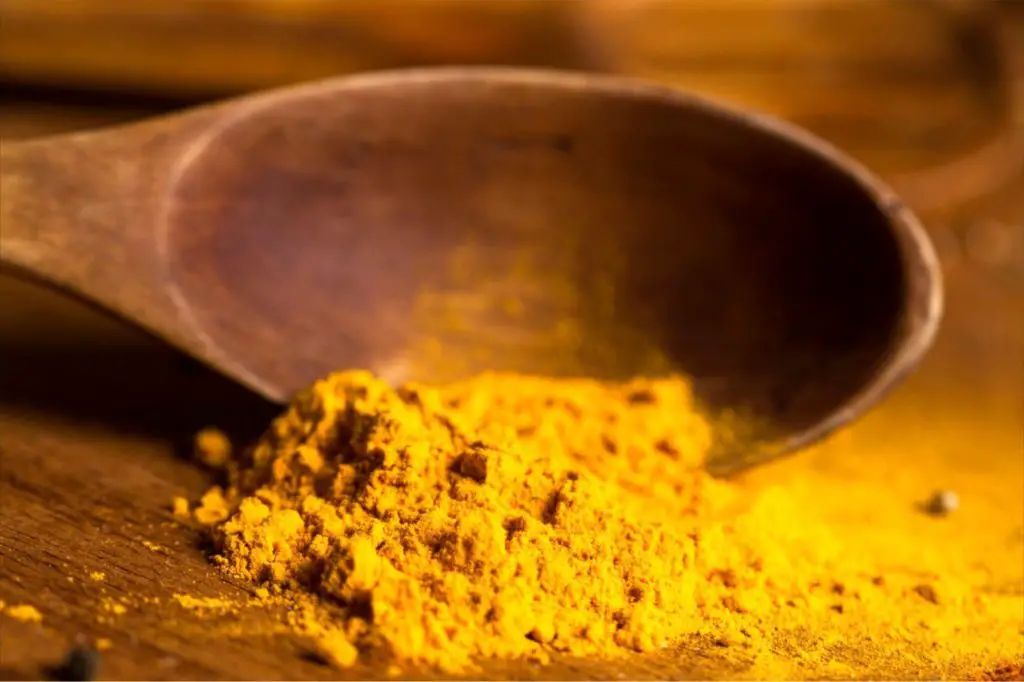
Curry Powder
One of the earthy spices used in various cuisines, Indian cuisine, curry powder has a long history in Indian cooking. It is made from various spices such as cardamom, coriander, cumin, and turmeric.
Despite their aroma and the flavor these aromatic spices add to food, curry powder can trigger reactions in people with histamine sensitivity.
Why? Curry powder contains substantial quantities of an amino acid called histidine, an amino acid that your body converts to histamine. If you don’t have enough DAO enzymes to break down the histamine, you can develop symptoms after eating a recipe made with curry powder.
In fact, 39% of the amino acids in curry powder is histidine.(1) That’s why many people with histamine intolerance have problems when they consume foods spiced with curry or any of its components.
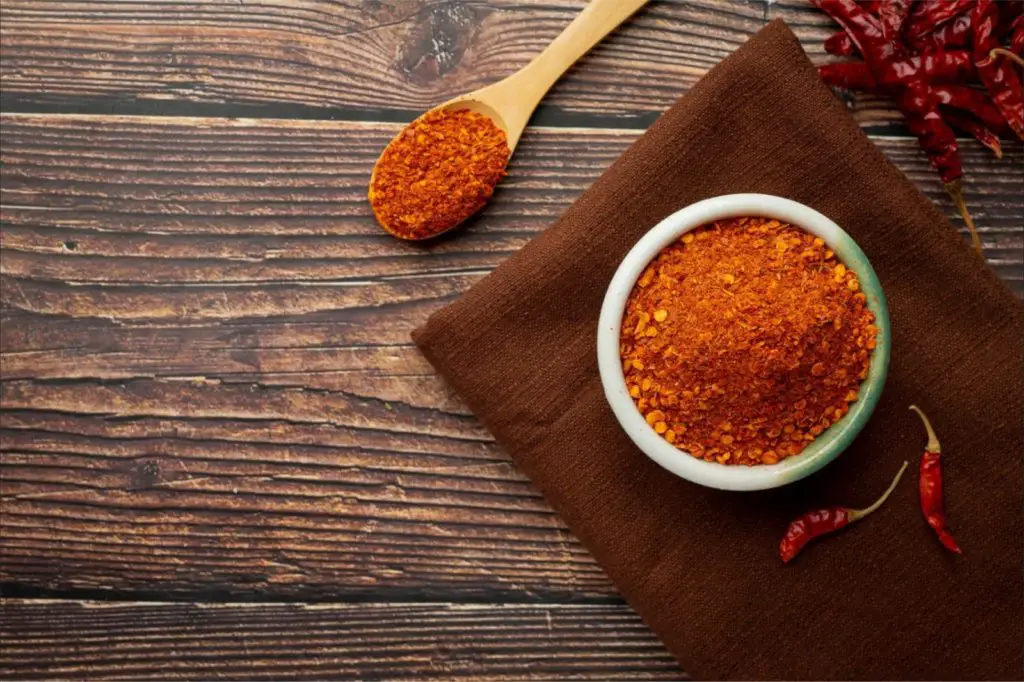
Paprika
Paprika is a popular spice popular in Indian cuisine, where it brightens the flavor of food and adds more flavor punch.
Paprika is often ground and sprinkled on top of various foods. It has a red color and typically smells of pepper, but can also have more of a nutty or sweet taste.
Paprika made from spicier peppers contains capsaicin, the same chemical that gives chili peppers their powerful punch. Some research suggests that capsaicin may benefit allergic rhinitis by desensitizing the nasal passages so they’re less responsive to allergens.(13) But this is an area that needs more research.
Paprika may have health benefits due to the carotenoids (antioxidant and anti-inflammatory compounds) it contains. (1) Carotenoids may lower the risk of some age-related eye diseases, including age-related macular degeneration and, possibly, cataracts. (12)
However, paprika can also exacerbate the symptoms of histamine intolerance, which is something you are trying to avoid. Like the other spices mentioned, paprika can raise your histamine level and aggravate histamine intolerance symptoms. It can also trigger allergic reactions in some people.
It is best to avoid paprika if you have a history of severe reactions to it or other similar spices, especially if you have other food allergies.
Paprika is also sprinkled on hummus. Find out whether hummus is high in histamine.
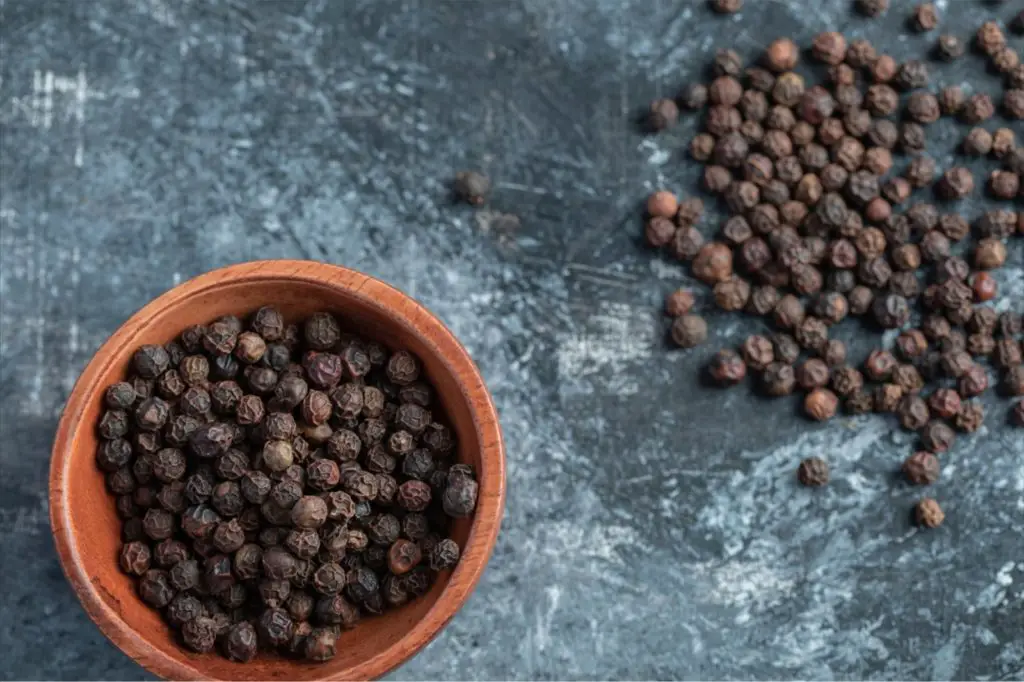
Black Pepper
Black pepper is more than just a spice – black peppercorns are fruits of the Piperaceae family and belong to the genus Piper. They are dried and crushed prior to use as a seasoning.
Although there are several varieties of black pepper, Black pepper is more commonly used as a spice for cooking than as a flavoring for food or beverages.
Pepper contains several active compounds, such as piperine (8) which helps reduce blood sugar levels and increase insulin sensitivity which helps fight diabetes. (9)
It’s estimated that about 80% of all processed foods contain some form of black pepper. That’s why processed and packaged foods can be problematic if you have histamine intolerance or food allergies. The spice can be obtained from several parts of the plant.
However, the fruit itself is the part that contains the piperine that provides black pepper its characteristic aroma and flavor. This makes it a versatile spice that can be used in a variety of ways, including being part of a spice blend for various dishes or being added directly to a dish.
Also, find out whether corn tortillas contain histamine.
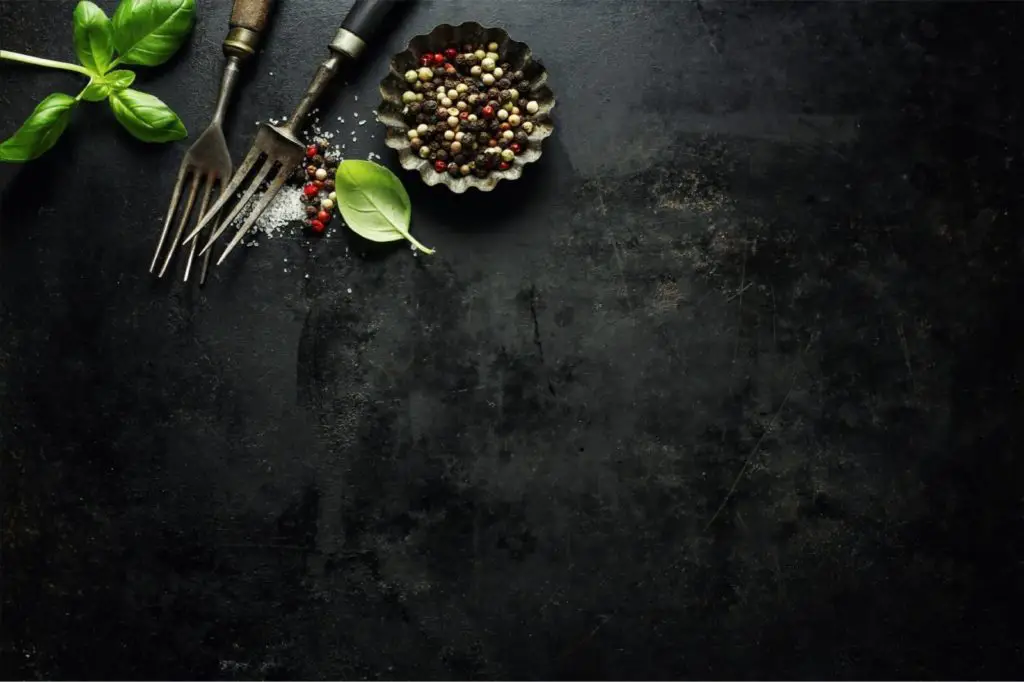
What about black pepper and histamine intolerance? Is black pepper one of the high-histamine spices?
Most people with histamine intolerance should avoid raw, ground black pepper, as it can trigger or worsen histamine intolerance symptoms. Some people also experience allergic-type symptoms when they consume foods or supplements that contain piperine, a major ingredient in black pepper.
It’s also possible that people who have histamine intolerance may be more likely to have adverse reactions to piperine-containing foods.
Another downside of black pepper it is also a potent source of food additives called sulfites. Sulfites are used to help prevent deterioration and preserve foods but can be extremely irritating for those with sensitivity to them.
They trigger asthma attacks in some people, which makes it important for those who have a sensitivity to know the foods they should avoid as well as those they can eat with no problem.
On the plus side, piperine has anti-inflammatory properties (10) and reduces intestinal inflammation in some studies. However, the cons outweigh the pros if you have histamine intolerance. Keep in mind that most processed foods contain black pepper, so think out of the package.
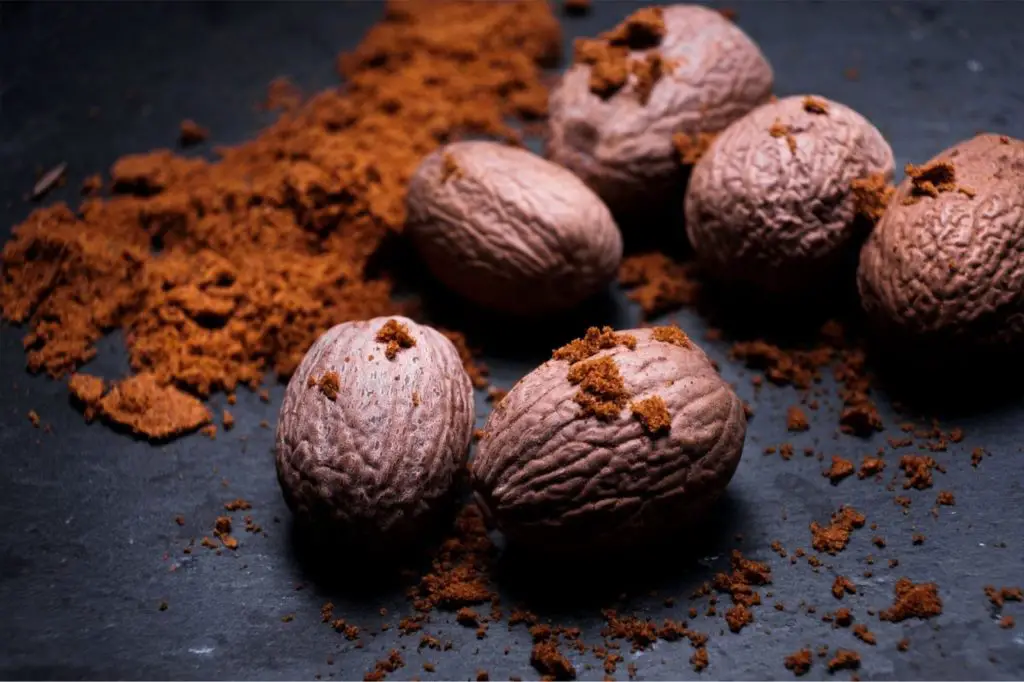
Nutmeg
Nutmeg is a deciduous evergreen tree native to Indonesia, India, and Malaysia. It can reach heights of up to 30 meters (100 feet) and has large, dark green leaves shaped like the scales on a fish.
Its flowers are white and fragrant. Its fruit is a deep red berry, similar in appearance to a small cherry that contains a single seed. The plant has a sweet aroma but is quite bitter when you crush or chew it.
Despite nutmeg being used medicinally over the ages, it can cause digestive issues. It contains several alkaloids, including myristicin, which can be toxic in large amounts. If you were to consume large quantities of nutmeg, you might experience nausea, vomiting, diarrhea, or lightheadedness.
But the news isn’t all bad about nutmeg. A mouse study using myristicin found that it had analgesic activity and helped reduce pain in female mice. (6)
In rare cases, people can experience seizures or even death from consuming large amounts of nutmeg too quickly. Although nutmeg is not considered poisonous when used in quantities less than 1 gram, some people are more sensitive to small amounts of nutmeg than others. It also contains a compound called limonene that can trigger allergic reactions in some people.
Why is nutmeg problematic if you have histamine intolerance? Is it one of the high-histamine spices? Nutmeg contains eugenol. (7) When you eat foods that contain eugenol, it increases histamine release. (15)
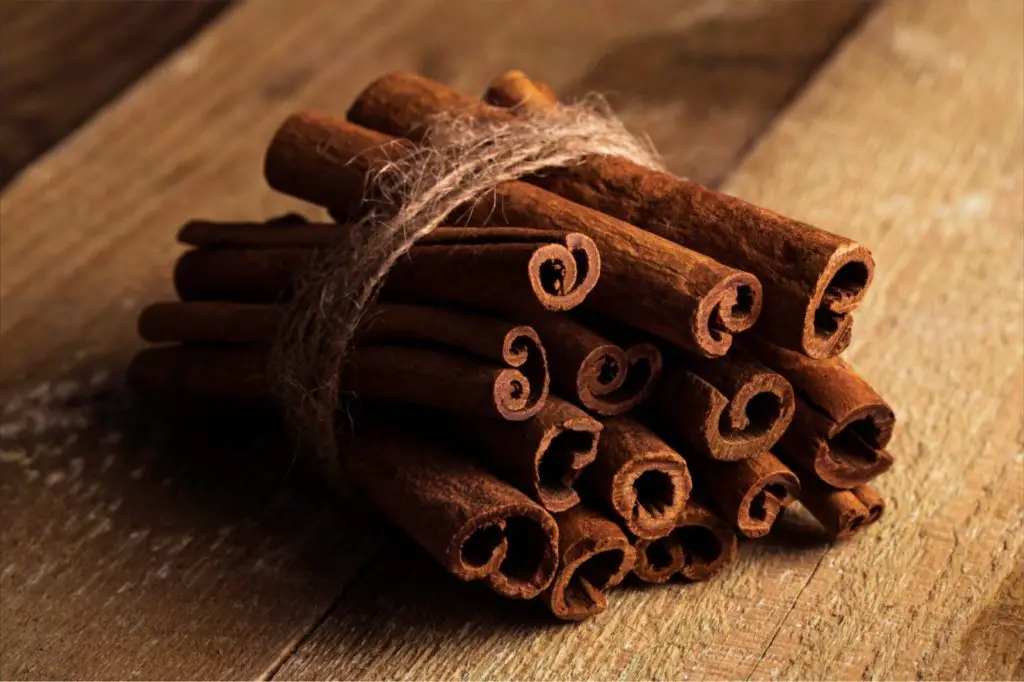
Cinnamon
Cinnamon is a traditional spice used in both sweet and savory dishes. It has been used as a medicine and as a natural remedy for centuries by civilizations all over the world. Cinnamon is an important spice in Southeast Asian cooking, as well as Chinese and Western kitchens.
It’s easy to recognize cinnamon in a dish due to its strong, warm flavor with a touch of sweetness. It can be used in many different dishes, including cereals, meat dishes, confectionery, and even desserts.
Cinnamon contains cinnamaldehyde, a powerful antioxidant, and numerous essential minerals and trace elements. Plus, small studies show that cinnamon can help lower cholesterol levels, blood triglycerides, and blood sugar levels by up to 12 percent after only six weeks of use in diabetics. (4,5)
Despite its lovely flavor, cinnamon may be problematic if you have histamine intolerance.
While not one of the inherently high histamine spices, Cinnamon contains compounds called benzoates that trigger histamine release.
So, cinnamon is a histamine stimulator, and you should approach it with caution if you have histamine intolerance.
Discover whether vanilla, a flavoring many people use with cinnamon, is low in histamine.
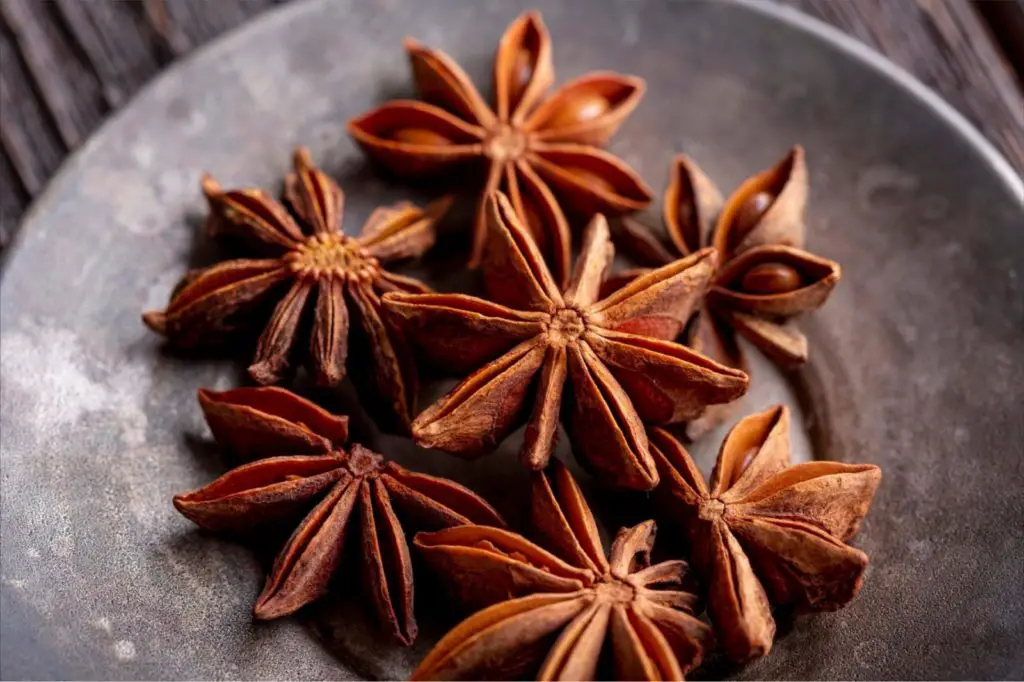
Anise
Anise seeds are an ancient spice. They are the seeds of the anise plant, native to Southeast Asia, but cultivated in Egypt and India. It’s also sometimes called aniseed or star anise. You can recognize it by its star shape, which you’ll notice when you break open the dried pod.
Anise is often used in savory dishes to give them an extra kick. A common spice used in Indian and Middle Eastern dishes; anise has a strong licorice flavor. It’s often found in drinks and desserts, and it’s often used to flavor liqueurs. Anise is one of the main ingredients in absinthe, which can be poisonous if consumed in high amounts.
Unfortunately, there’s little research into how anise affects histamine levels, but from reports gathered from patients, it seems to aggravate histamine intolerance symptoms in a number of users. Based on limited data, approach this spice with caution.
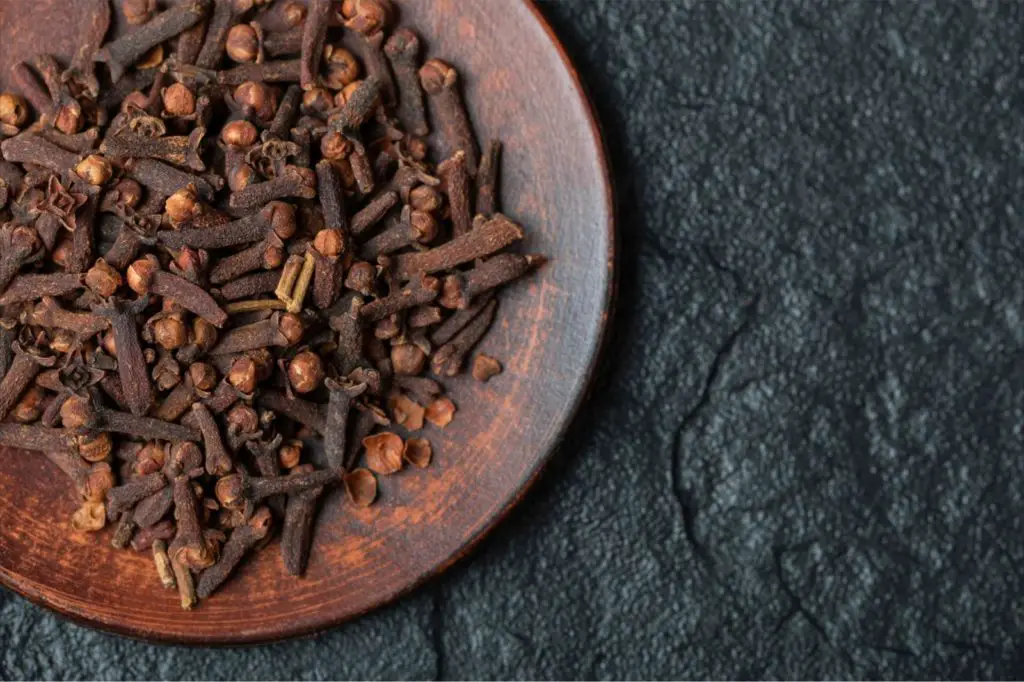
Cloves
Cloves are a natural spice used as a flavoring and preservative for meats, seafood, and vegetables. Cloves are the dried flower buds of a tropical evergreen tree native to Indonesia and Malaysia. It’s also known as “bulb” or “cassia” and can be found in many grocery stores.
The fact that cloves are native to India is no accident. They’re a good source of antioxidants, which fight free radicals that can damage cells.
And cloves are packed with other nutrients, including iron, magnesium, calcium, beta-carotene, vitamins A, E, K, and B vitamins. (3) They also contain modest quantities of the flavonoid quercetin, which has anti-inflammatory properties. (14)
Cloves contain a powerful compound called eugenol, which can cause a burning sensation in the mouth and throat if you consume this spice in large quantities. Yet eugenol is also an antioxidant, and studies in rodents show that eugenol may improve fatty liver and abnormal blood lipids. (2) But it’s an area that needs more research in humans.
Erucic acid, a fatty acid, is another compound found in clove oil that also causes inflammation, which is why people with histamine intolerance should avoid cloves and their oil. Like cinnamon, cloves contain benzoates too.
The Bottom Line
These are general guidelines, and everyone is a little different. If you have histamine intolerance, you may find you can tolerate certain foods that trigger symptoms in someone else. The amount of diamine oxidase enzyme you have to break down histamine differs from someone else with histamine intolerance.
Plus, you may have other sensitivities that trigger symptoms. For example, some people have reactions to benzoates and attribute the symptoms to histamine intolerance. That’s why there’s so much variation in the response to various foods and spices.
As always, keep a food diary so you’ll know how your body responds to high-histamine spices and specific foods. That’s the only way to know how YOU respond to each spice.
Now, find out whether carrots, veggies good for your eyes, are high in histamine. Also, find out whether garlic is high in histamine and whether you can enjoy mustard if you have histamine intolerance.
References:
- https://www.cochrane.org/CD004460/ENT_capsaicin-for-allergic-rhinitisNutrientOptimiser.com “Curry Powder” https://nutrientoptimiser.com/nutritional-value-spices-curry-powder/
- Al-Okbi SY, Mohamed DA, Hamed TE, Edris AE. Protective effect of clove oil and eugenol microemulsions on fatty liver and dyslipidemia as components of metabolic syndrome. J Med Food. 2014 Jul;17(7):764-71. doi: 10.1089/jmf.2013.0033. Epub 2014 Mar 10. PMID: 24611461. https://www.liebertpub.com/doi/abs/10.1089/jmf.2013.0033
- NutrientOptimiser.com “Cloves” https://www.ncbi.nlm.nih.gov/pmc/articles/PMC3819475/
- Anderson RA, Zhan Z, Luo R, Guo X, Guo Q, Zhou J, Kong J, Davis PA, Stoecker BJ. Cinnamon extract lowers glucose, insulin and cholesterol in people with elevated serum glucose. J Tradit Complement Med. 2015 Apr 18;6(4):332-336. doi: 10.1016/j.jtcme.2015.03.005. PMID: 27774415; PMCID: PMC5067830.
- Khan A, Safdar M, Ali Khan MM, Khattak KN, Anderson RA. Cinnamon improves glucose and lipids of people with type 2 diabetes. Diabetes Care. 2003 Dec;26(12):3215-8. doi: 10.2337/diacare.26.12.3215. PMID: 14633804. https://pubmed.ncbi.nlm.nih.gov/14633804/
- Hayfaa AA, Sahar AM, Awatif MA. Evaluation of analgesic activity and toxicity of alkaloids in Myristica fragrans seeds in mice. J Pain Res. 2013 Jul 31;6:611-5. doi: 10.2147/JPR.S45591. PMID: 23946667; PMCID: PMC3738253.
- “The biological activity of eugenol, a major constituent of ….” https://onlinelibrary.wiley.com/doi/abs/10.1002/ptr.2650020305.
- Srinivasan K. Black pepper and its pungent principle-piperine: a review of diverse physiological effects. Crit Rev Food Sci Nutr. 2007;47(8):735-48. doi: 10.1080/10408390601062054. PMID: 17987447. https://pubmed.ncbi.nlm.nih.gov/17987447/
- “Effect of Piperine in Obesity Induced Insulin Resistance ….” http://informaticsjournals.com/index.php/jnr/article/view/252.
- Mujumdar AM, Dhuley JN, Deshmukh VK, Raman PH, Naik SR. Anti-inflammatory activity of piperine. Jpn J Med Sci Biol. 1990 Jun;43(3):95-100. doi: 10.7883/yoken1952.43.95. PMID: 2283727. https://pubmed.ncbi.nlm.nih.gov/2283727/
- Molnár P, Kawase M, Satoh K, Sohara Y, Tanaka T, Tani S, Sakagami H, Nakashima H, Motohashi N, Gyémánt N, Molnár J. Biological activity of carotenoids in red paprika, Valencia orange and Golden delicious apple. Phytother Res. 2005 Aug;19(8):700-7. doi: 10.1002/ptr.1735. PMID: 16177974.
- Piermarocchi S, Saviano S, Parisi V, Tedeschi M, Panozzo G, Scarpa G, Boschi G, Lo Giudice G; Carmis Study Group. Carotenoids in Age-related Maculopathy Italian Study (CARMIS): two-year results of a randomized study. Eur J Ophthalmol. 2012 Mar-Apr;22(2):216-25. doi: 10.5301/ejo.5000069. PMID: 22009916. https://pubmed.ncbi.nlm.nih.gov/22009916/
- Cochrane Database. “Capsaicin for Allergic Rhinitis” https://www.cochrane.org/CD004460/ENT_capsaicin-for-allergic-rhinitis
- Cortés-Rojas DF, de Souza CR, Oliveira WP. Clove (Syzygium aromaticum): a precious spice. Asian Pac J Trop Biomed. 2014 Feb;4(2):90-6. doi: 10.1016/S2221-1691(14)60215-X. PMID: 25182278; PMCID: PMC3819475.
- Selleckchem.com. “Eugenol”


Thank you, so much for this info. I have so many Histamine intolerances. I get a lot of joint aching and itching if I eat the wrong stuff. People including renowned Health specialists Dr.’s say eat Tumeric,Coconut ,Cloves, Cinnamon, nutmeg, bromaline which is in Pineapple, etc. If i intake these things, I just start having joint and itching problems even with the Xolair in my system. I am supper histamine intolerant and take a $2,000.00 Xoliar shot each month to help calm my system. I already know I am gluten, wheat,Coconut, pineapple , Tumeric, intolerant and most dairy ( I can eat certain cheeses unless they have a lot of milk in them or are too processed. ) plus anything with ingrediants similar to Grass. Like Alpalpha, spirulina really make my joints swell and skin itch. I had to stop doing the homemade green juice as it made my Urticaria worse instead of the claims to make it better. Dr.’s don’t understand it not even the all the stuff they say will help you,can make me worse. I know they do so much research to prove their product is the Best. I have tried several of the most renowned Dr.’s formulas and thought I had one that was pretty free of all the things I am allergic too. But the new one I am trying has a ton of Cloves in it. with other what I thought might be safe ingredients (in capsule form) and I have noticed much itching and some joint problems. It is called Total Restore by Dr.Grundy. So after reading your review,I realize the Cloves may be the problem. Plus have been loading my coffee with cinnamon and ginger. I think the cinnamon may be causing issues also. Your confirmation of what spices cause issues, helps me realize these are probably the problem. I was loading my coffee with Tumariac and getting joint pain which its been said was supposed to be the opposite. I quit that and things got better. But lately was putting the cinnamon in the coffee, and taking these new supplements with cloves and now I am all itchy and some joint aching. Now I can tell my friends who insist that cinnamon. cloves. Tumeric, are all good for you that not for me they really are an issue for people like me. I have noticed I am the opposite of other people when it comes to things that they say I should be allergic to like corn and rice.,I am not but the things they say you should take like all these spices you mention, I can’t tolerate them.So your article was supper helpful to me to see both sides of the good and bad of these spices.
Sorry to be so slow responding, Theresa! I appreciate you sharing your story. I know food intolerances are frustrating. Sometimes it takes a lot of trial and error to find out what works for you and what doesn’t. It sounds like you have a lot of sensitivities to deal with too. Cinnamon, despite some of its benefits, is a problem for a lot of people. Some people with asthma have problems even when they inhale a small amount. As you mention, cloves can be problematic too. Have you tried keeping a food journal?